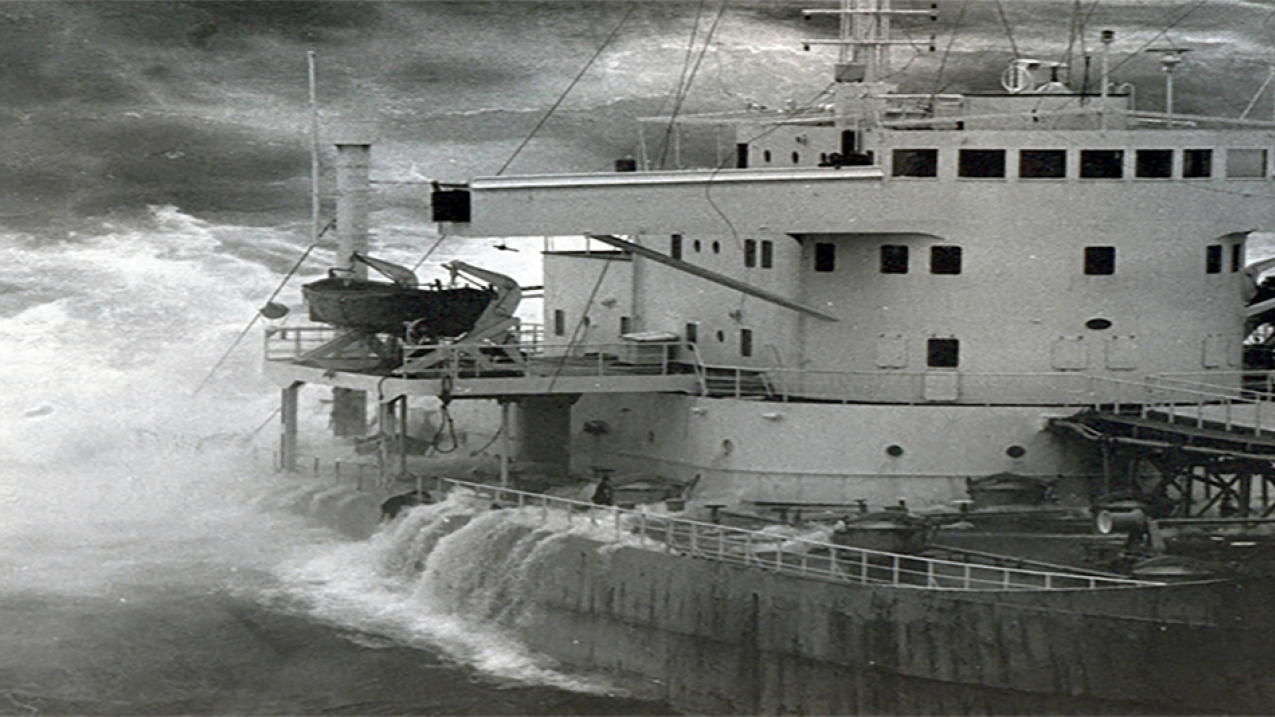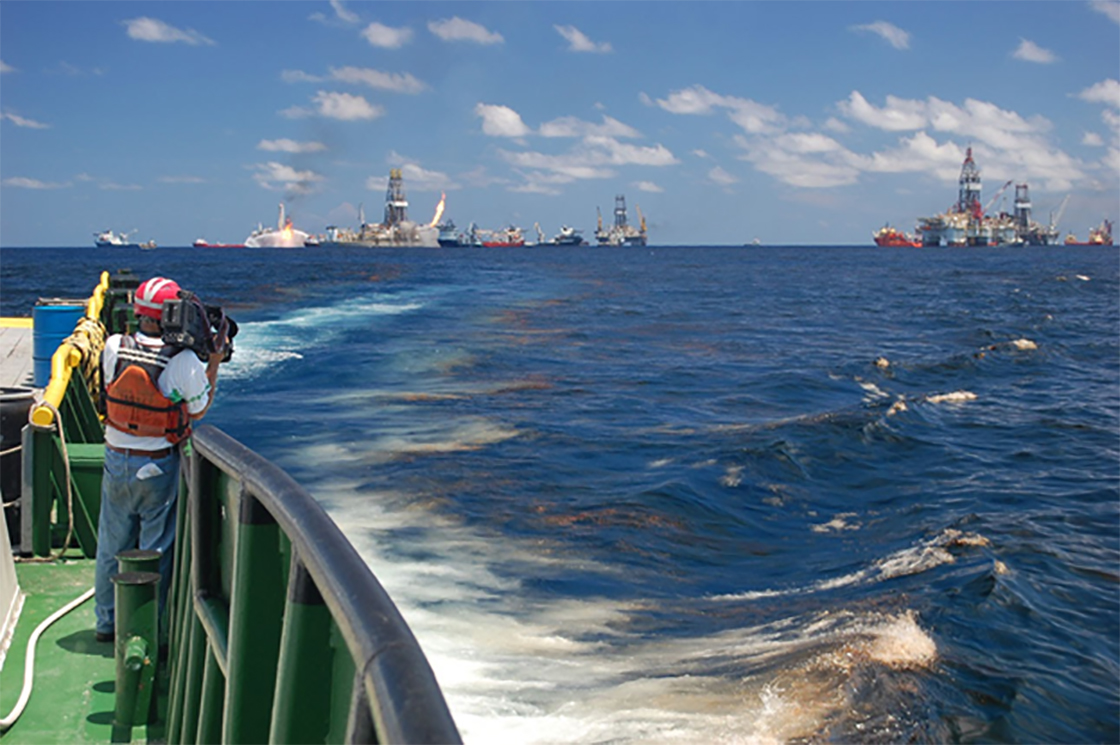On December 15, 1976, the tanker Argo Merchant ran aground near Nantucket Shoals in Massachusetts and broke in half several days later. The entire 7.7 million gallons of heavy fuel oil it carried spilled into the Shoals, threatening damage to the famous fishing grounds. Over the days and weeks that followed, NOAA began its first major coordinated oil spill response activity.

On December 15, 1976, the Liberian tanker Argo Merchant ran aground on Nantucket Shoals, off the Massachusetts coast, in high winds and ten foot seas. Its destination was Salem, Mass., where the tanker was scheduled to deliver a winter's supply of fuel to a local power plant. (Image credit: Coast Guard Historian )





